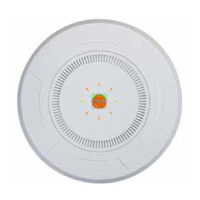Wireless Access Point
64 Installing the Wireless AP
Figure 28. A Multiple Hop WDS Connection
Multiple WDS links can provide link redundancy (failover capability - see
Figure 29). A network protocol (Spanning Tree Protocol — STP) prevents
APs from forming network loops.
Figure 29. WDS Failover Protection

